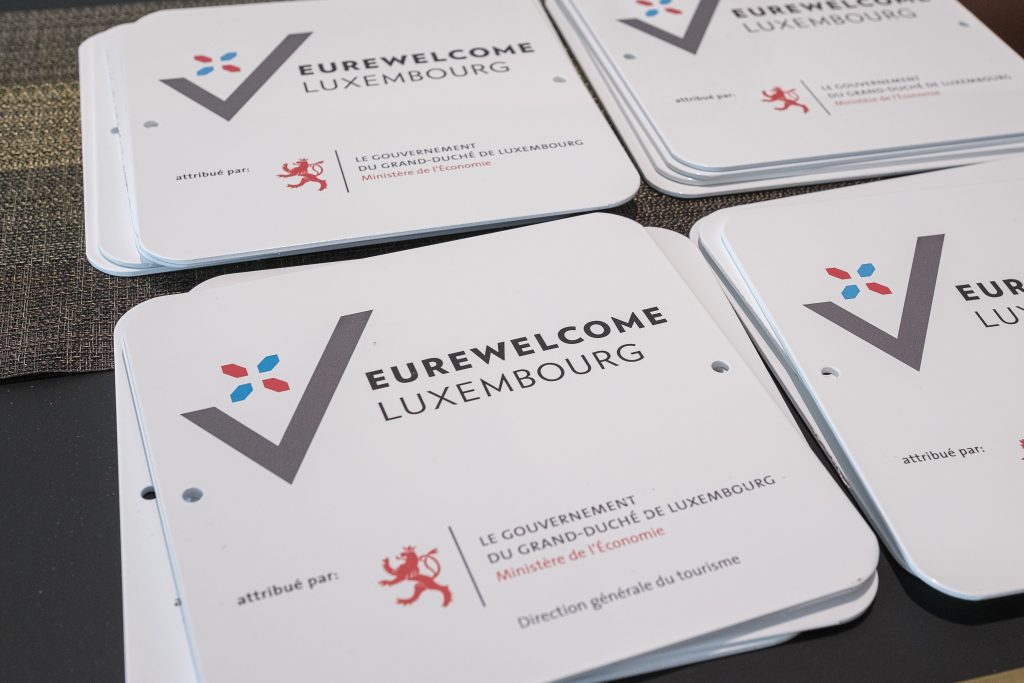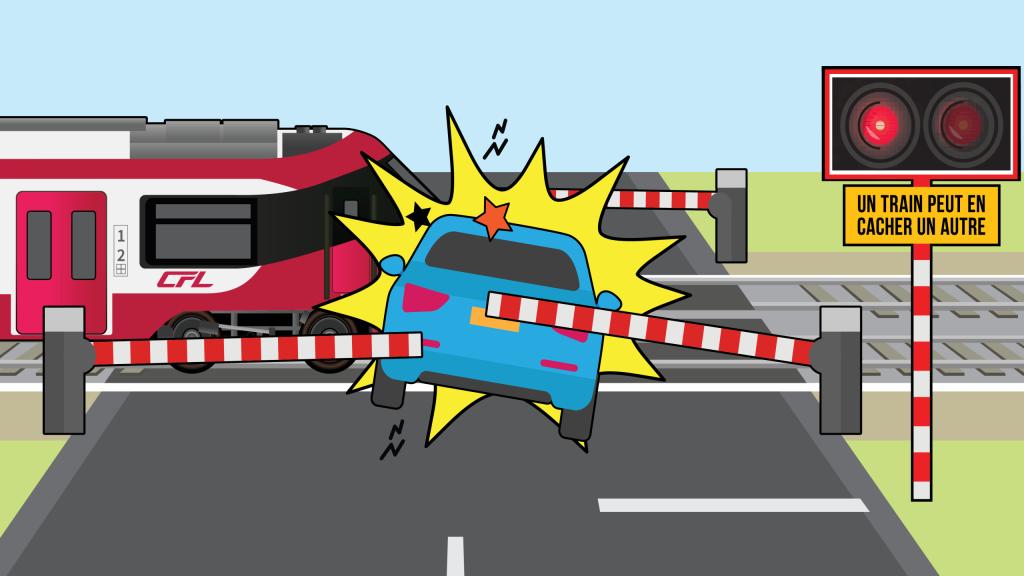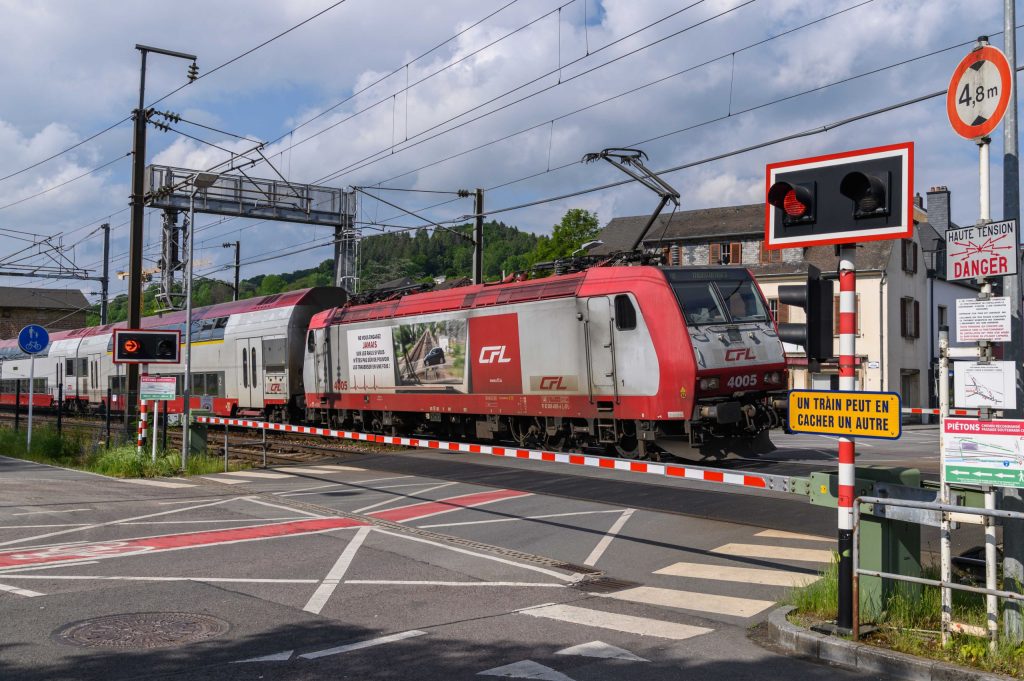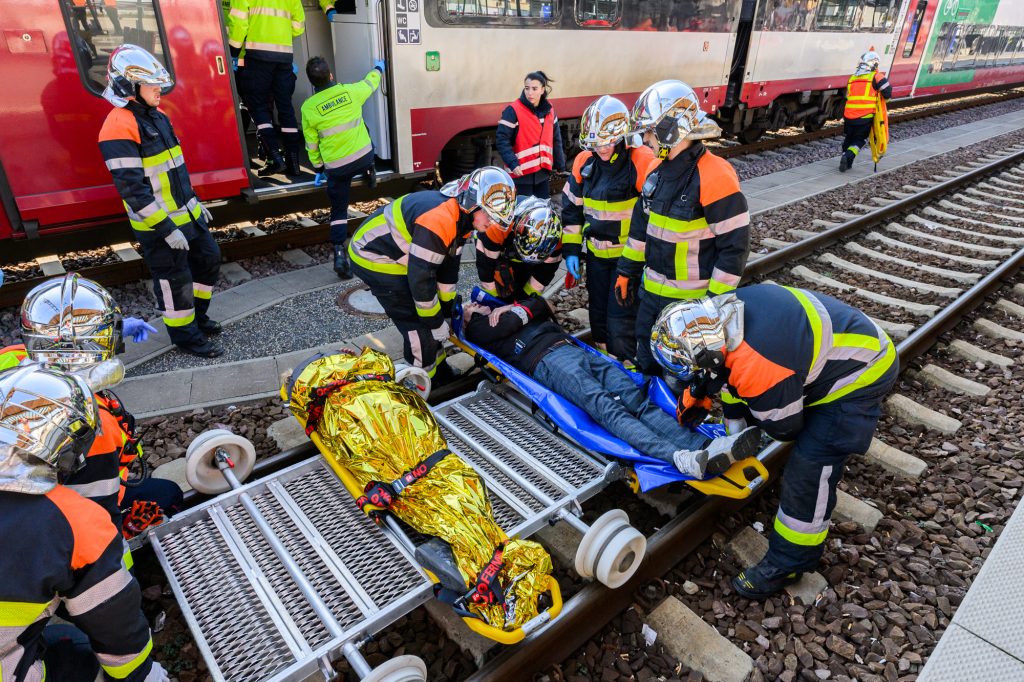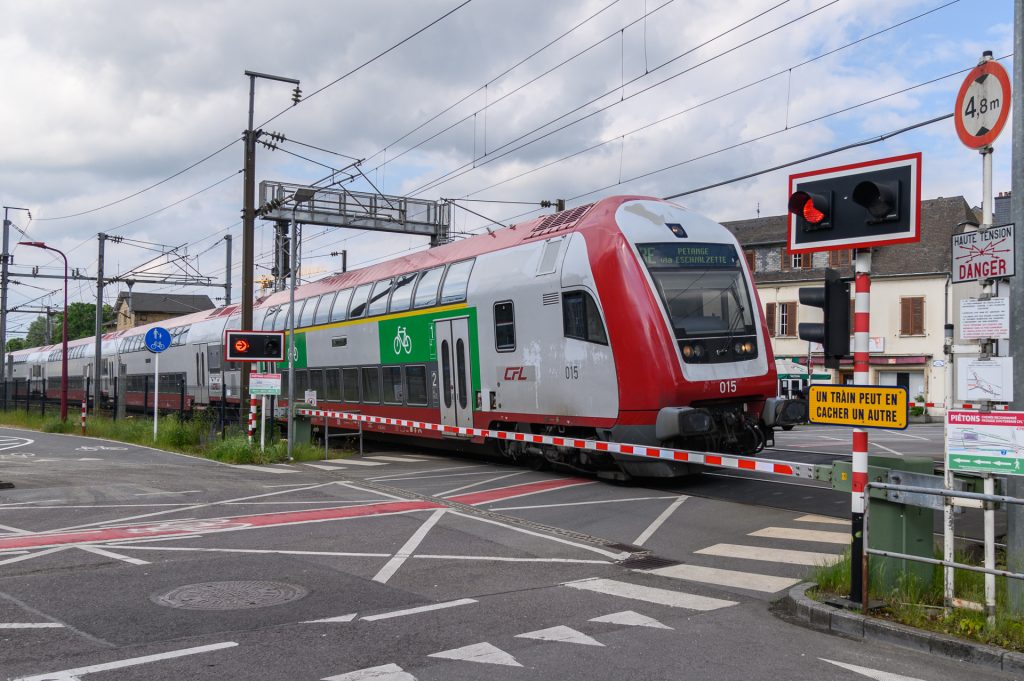
How to recognise the accessibility of a railway station

Example of Sandweiler-Contern
Accessibility. A matter of course for most people. Even when travelling by train. You enter the station hall, take a look at the information board, go to the platform and take a seat in the appropriate train compartment.
For people with a physical impairment (physically or visually impaired for example) or mental disabilities, this is not a matter of course. To make everyday life easier for these people, the CFL have been endeavouring for years to equip their stations in such a way that accessibility is guaranteed. Stations are then labelled as accessible with the EureWelcome label.
We are meeting Patrick Schaack at the Sandweiler-Contern stop. He is responsible for accessibility at the CFL’s Sécurité, Sûreté et Environnement department. During the tour at the refurbished Sandweiler-Contern stop, he explains the aspects that need to be taken into account for an infrastructure to be labelled as accessible. ‘Accessibility means inclusion and barrier-free access,’ says Patrick Schaack.
Accessible stairs and lifts
Accessibility begins a short distance from the station: disabled parking spaces must be located as close as possible to the nearest accessible entrance to the station. White cobblestones should mark the way to the station/platform. Their dots and lines provide orientation for people with visual impairments: dots felt with a cane and shoes draw attention to a changing environment; lines indicate the direction of travel.
Steps prove to be a constant hindrance – an experience that people with pushchairs are also familiar with. The maximum step height in front of doors must not exceed 2.5 cm. For their part, doors must be at least 90 cm wide. Patrick Schaack adds that if sanitary facilities are provided, at least one of them must be accessible for a wheelchair.
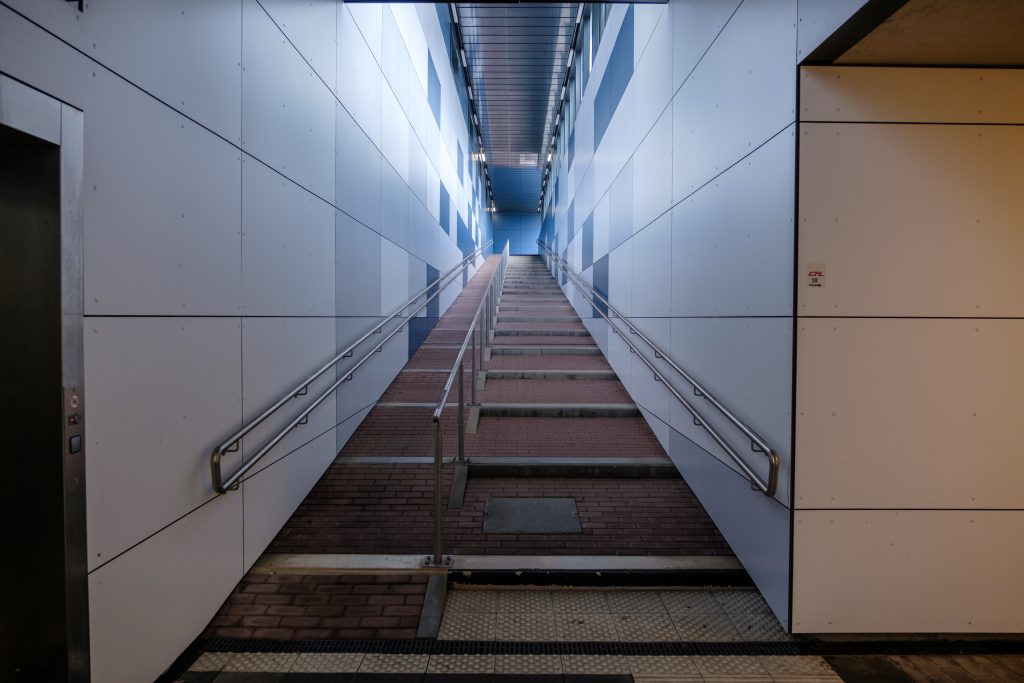
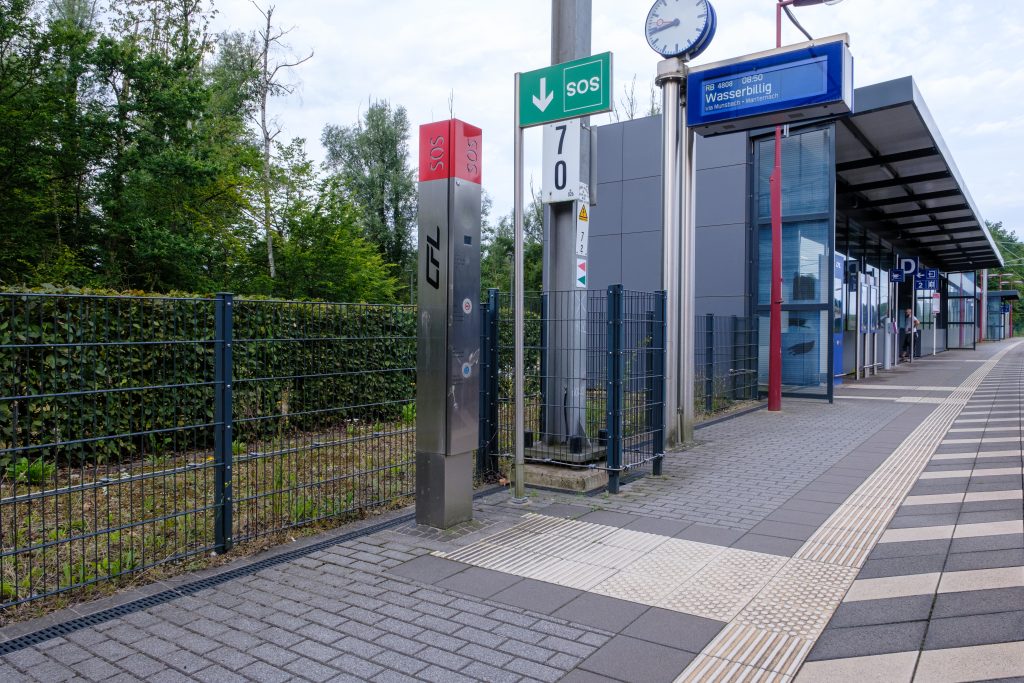
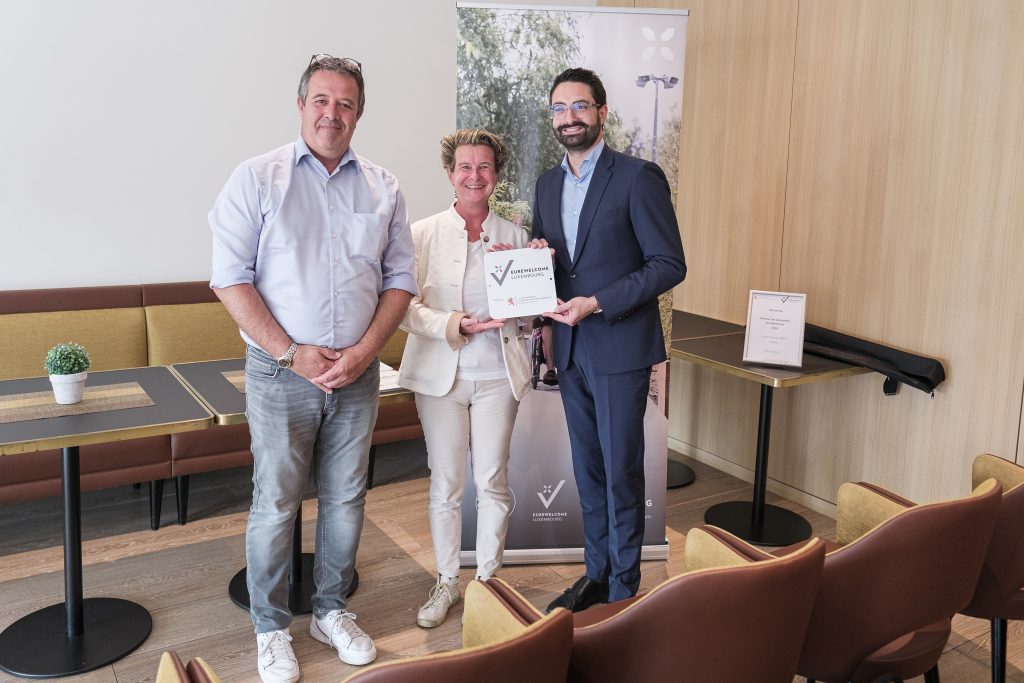
While wheelchair users and people with walking disabilities are dependent on a lift, visually impaired people can manage stairs. As long as they are appropriately labelled and recognisable. This includes information about the platform and train line being displayed in Braille on the handrails – and also being maintained: If the Braille is covered in dirt, it becomes illegible. This also means that the steps, in particular the top and bottom steps, must be recognisable or suggestive by means of a high-contrast colour scheme and at least the first step must be marked with an attention field of the guideline.
In general, colour contrasts in the design of station facilities and a well-lit infrastructure are helpful for people with visual impairments.
In the lifts, the fittings are positioned at an accessible height and have Braille lettering. The distinctive button for the ground floor and acoustic announcements serve as additional orientation aids.
A button also serves as an aid on the display columns that announce the trains. If you can’t read the information, press and hold this button and audio announcements will read out the current timetable.
The CFL’s own emergency call pillars installed at the stations have two buttons: the lower one is easily accessible for wheelchair users so that they can make an emergency call to the BMS control centre, which is manned 24/7, in cas of an emergency.
EureWelcome The EureWelcome label is awarded by the tourism department of the Ministry of Economic Affairs to hotels, campsites and swimming pools, among others. Before an establishment can be designated as accessible, it is scrutinised by representatives of the Info-Handicap association; the label is then awarded - or not - on the basis of their assessment. This year, CFL stations Drauffelt, Kleinbettingen, Mersch, Michelau, Rodange and Roodt/Syre were awarded the EuroWelcome label, meaning that 27 stations of the national railway company now have the EuroWelcome label.
